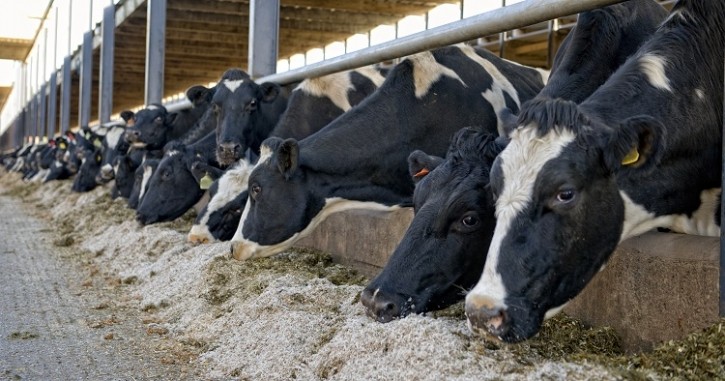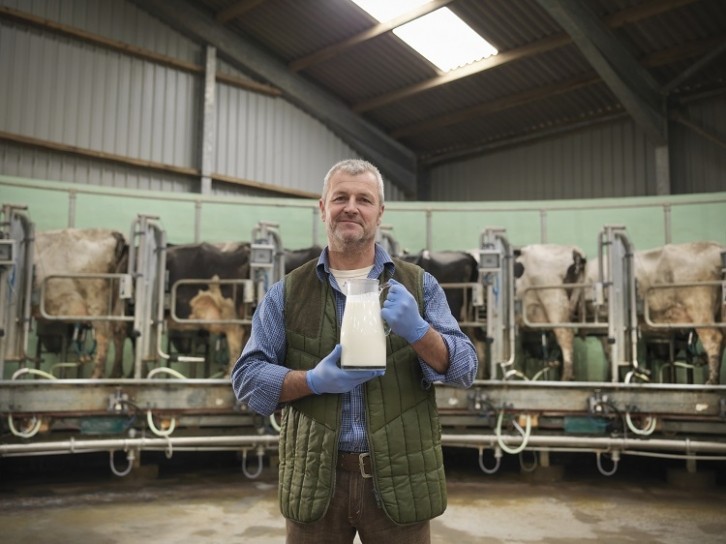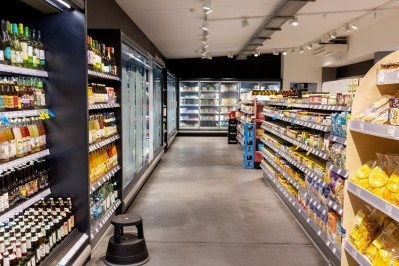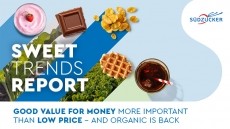The price of butter keeps creeping up, why?

Whether spread generously on toast or baked in a cake, butter is a staple ingredient in many kitchens across the world. But recent years have seen a noticeable and sustained increase in the cost of butter.
According to the Agriculture & Horticulture Development Board (AHDB), butter prices in the EU were, "up 2.4% month-on-month and recorded a significant increase of 18.5% year-on-year," between 2023 and 2024.
So why has the price of butter risen in recent years and is this trend here to stay?
Why is the price of butter so high?
The rise in the price of butter in recent years has been the result of a number of factors affecting the dairy industry, the first of these being political.
"Peaks and troughs in commodity markets like dairy and in a category like butter, are not unusual but volatility has certainly defined itself as a major feature of the past four or five years," Margaret Butler, sector manager for dairy ingredients at the Irish Food Board, Bord Bia, told FoodNavigator.
“The dairy market has been on a bit of a rollercoaster ride over the last two or so years," agrees David Swales, head of Livestock Market Intelligence at AHDB. "This was triggered by the war in Ukraine. Since the start of the war we’ve seen a huge spike in energy prices and fertiliser prices shot up."
These increased costs to farmers, dairy processors and retailers has ultimately been felt by consumers in the cost of products, including butter.
In addition to this, extreme weather events have impacted the dairy industry. 2020 saw drought impacting countries across Europe. This lead to a reduction in grass for dairy cows to eat.
“We had a really dry summer in 2020,” Swales told FoodNavigator. “Typically, the cows go out to graze in spring and summer but it was so dry that the grass wasn’t growing and so farmers had to feed their cows silage from previous years and then buy additional feed to feed their animals.”
This perfect storm of political and environmental changes led to concern amongst the dairy processors that dairy farmers would reduce milk production as it simply wasn’t profitable for them to maintain or increase production levels.
“The market responded to these changes and the milk price shot up to encourage the farmers to produce more milk,” explains Swales. “Then butter, cheese and other commodities have to rise in price for the processors to be able to maintain their profitability.”
In addition to these environmental and political factors, many people in the dairy industry believe that butter is receiving the recognition it deserves as a high-quality product.
“Milk fat and butter have regained the recognition of its nutritional value for quite some time,” Alexander Anton, secretary general of the European Dairy Association told FoodNavigator. “Butter is, and has always been, a luxury product in terms of quality, taste and nutrition. Today it is an affordable and accessible ‘every day’ luxury product in Europe and large parts of the world.”
“My favourite dairy product is butter. A dollop of butter spread over a fresh slice of brown bread is one of life's simple pleasures”, said Phil Hogan, former EU Commissioner for Agriculture and Trade.
Will the price of butter continue to rise?
“We get an early indication of the future cost of butter to consumers by looking at the wholesale market,” explains Swales. “The price of butter on the wholesale market has dropped back and it is now levelling off.”
However, we have again seen extreme weather in the form of heavy rainfall resulting in flooding across many European countries. This has meant that dairy farmers are again unable to graze their cows outside as the ground is too wet and the cows would actually damage the fields. As a result of this, farmers are missing out on a time known to dairy farmers as “the flush”. The flush is a period of maximum milk production where the cows are typically outside grazing in the fields, gaining plenty of energy from the grass and producing plenty of milk. Farmers are therefore waiting to see how much milk they get this year.
“If the wet weather has impacted production, then that will likely raise prices, but at the moment we’re expecting more or less the same amount of milk as last year so it’s stable,” says Swales. “But in the last three months the markets have been nicely balanced, moving in a straight line and is down on where we were a year ago. In terms of retail prices, I don’t see a lot of upward pressure.”
This analysis will come as welcome news to consumers who have seen budgets stretched during the cost-of-living crisis.
However, if demand for dairy products grows then the price may well rise again.
"We’re likely in a plateau period for milk output, certainly from a European perspective," says Bord Bia's Butler. "If demand sustains itself or indeed grows, that should infer that commodity prices will sustain or increase in tandem to meet that demand from a milk pool that is unlikely to see major appreciations."
Others believe the price of butter will remain higher, regardless of supply and demand, believing that this is a more accurate price.
“We don’t have a crystal ball,” says the European Dairy Association's Anton, “but all analysts and outlooks indicate that butter will continue to be traded at its real value – the futures market show the resilience of todays’ market price for the coming months.”
Demand for butter across Europe
“Consumers are very price sensitive at the moment, with the cost-of-living crisis and in terms of price-per-kilo basis, butter is more expensive than quite a few alternatives in the margarine space so there is a degree of consumer switching,” says AHDB's Swales.
However, many consumers have continued to purchase butter for its superior taste, as well as the fact that it is a natural ingredient unlike more processed alternatives, such as margarine.
Additionally, when eaten in moderation, butter offers multiple health benefits. It’s a good source of vitamin A, which supports physical development and immune function, and also contains Butyrate, a fatty acid, which supports gut health.
“We’ve seen the growing importance that consumers have put on health,” explains Swales. “What we are seeing is a big push for naturalness and against ultra-processed foods.”




























